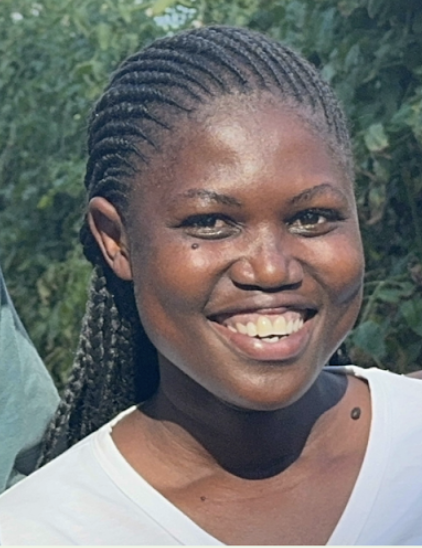In the fertile Kilombero Valley, Praxeda Melkior’s journey from aspiring farmer to successful CEO reveals a blueprint for transforming Tanzania’s massive youth population into an agricultural powerhouse
In the vast expanse of Tanzania’s Kilombero Valley, where elephants once roamed freely and rice paddies now stretch to the horizon, a quiet revolution is taking place. At its heart is Praxeda Melkior, a young entrepreneur whose success story embodies both the promise and the challenge of modern African agriculture.
“SAGCOT opened doors for us,” Melkior says, referring to the Southern Agricultural Growth Corridor of Tanzania, a pioneering public-private partnership. “Through exposure, we’ve transformed our passion into a thriving agribusiness.”
Her company, Migeto Agribusiness Company Limited, has created 67 jobs in a region where formal employment is as precious as water in the dry season. But Melkior’s achievement represents something far more significant than a single success story—it’s proof that Tanzania’s ambitious plan to transform subsistence farming into a modern economic powerhouse might actually work.
The Youth Challenge
Tanzania faces a demographic reality that could either propel it to prosperity or trap it in poverty. Three-quarters of the country’s population is under 35, creating both an enormous opportunity and an urgent challenge. In agriculture, which employs two-thirds of all Tanzanians, young people have historically faced seemingly insurmountable barriers: limited access to land, inadequate infrastructure, poor-quality inputs, and perhaps most critically, an almost complete lack of finance.
For decades, banks viewed smallholder farmers and agricultural startups as unbankable—high-risk clients lacking collateral and formal business structures. This perception created a vicious cycle: without credit, farmers couldn’t modernize; without modernization, they couldn’t become creditworthy.
Enter SAGCOT, conceived at the 2010 World Economic Forum in Dar es Salaam and officially launched in 2011. This wasn’t another aid program or government handout scheme. Instead, it represented a fundamental reimagining of how to make agriculture investable.
“Agriculture is not charity—it’s good business,” insists Johanna Kaduma Johane, Managing Director of the Private Agricultural Sector Support Trust (PASS), one of SAGCOT’s key partners.
The Kilombero Laboratory
The Kilombero Valley, where Melkior built her business, serves as both SAGCOT’s most promising showcase and its most complex challenge. The valley’s rich soils produce the majority of Tanzania’s rice, alongside sugarcane and cocoa. Large commercial operations like Kilombero Sugar Company operate alongside thousands of smallholder farmers cultivating plots of one hectare or less.
But this agricultural bounty exists in delicate balance with one of Africa’s most important ecosystems. The valley is a designated RAMSAR wetland site, bordered by the Selous Game Reserve and Udzungwa National Park. Agricultural expansion threatens ancient elephant migration routes, while climate change is already devastating harvests. One farmer from Mkula ward reports her rice yield has plummeted from 30 tonnes to just 10 tonnes per season due to extreme weather events.
Success here requires threading an impossibly fine needle—creating economic opportunity without environmental catastrophe, building wealth without destroying communities, modernizing agriculture while preserving traditions.
Building an Ecosystem
What makes Melkior’s success particularly instructive is that it wasn’t achieved in isolation. When she credits SAGCOT with “opening doors,” she’s describing a sophisticated ecosystem of support that transforms raw entrepreneurial energy into structured business success.
This “exposure,” as Melkior calls it, operates on multiple levels. First, there’s exposure to markets—moving beyond fragmented local sales into structured, profitable value chains that can reach export markets. Then there’s exposure to finance and partners, with SAGCOT acting as a broker, connecting entrepreneurs with investors, government authorities, and international development partners.
Perhaps most crucially, there’s exposure to knowledge. Through programs like the USAID-funded Feed the Future Tanzania Private Sector Strengthening Project, implemented by Tetra Tech with a budget of $9.6 million, young entrepreneurs receive training in modern agriculture techniques, value addition, and business management.
The approach centers on a “cluster model,” organizing development around existing infrastructure that links fertile farmland to the port of Dar es Salaam. Within these clusters, large-scale anchor farms create reliable markets for thousands of smallholders, who in turn provide steady raw material supplies. This predictable ecosystem allows SMEs like Migeto Agribusiness to find their niche, confidently sourcing from smallholders while accessing structured paths to larger markets.
Green Growth Imperative
Critically, SAGCOT’s model embeds environmental sustainability as a non-negotiable principle. The partnership’s Green Reference Group works with all stakeholders to promote sustainable practices, addressing water use, community relationships, and land management. Partners like the African Wildlife Foundation have helped sugarcane farmers increase production by 70% while actually reducing land demand—proving that intensification, not expansion, can drive growth.
For entrepreneurs like Melkior, operating within this framework means their success contributes to a larger experiment: proving that African agriculture can create wealth and jobs while respecting environmental boundaries essential for long-term survival.
The Road Ahead
Tanzania’s challenge remains daunting. The informal economy still dominates, accounting for 82% of non-agricultural employment. Most agricultural workers still lack formal contracts, minimum wage protections, or social insurance. Creating enough formal, dignified jobs for the youth bulge requires transformation at a scale and speed rarely achieved anywhere.
Yet Melkior’s journey from passion to paychecks suggests the model might be working. By de-risking agriculture through coordinated public-private partnerships, providing comprehensive support ecosystems for entrepreneurs, and maintaining strict environmental standards, SAGCOT is creating conditions where young Tanzanians can build real businesses rather than just scramble for survival.
“Through exposure, we’ve transformed our passion,” Melkior says. In that simple statement lies both an individual triumph and a national strategy. If Tanzania can replicate this transformation at scale—turning millions of young people’s agricultural passion into formal businesses—it could rewrite not just its own economic story, but provide a model for agricultural transformation across Africa.
In the Kilombero Valley, between the protected forests and the vast rice fields, that future is already taking root. One entrepreneur, one business, 67 jobs at a time.
